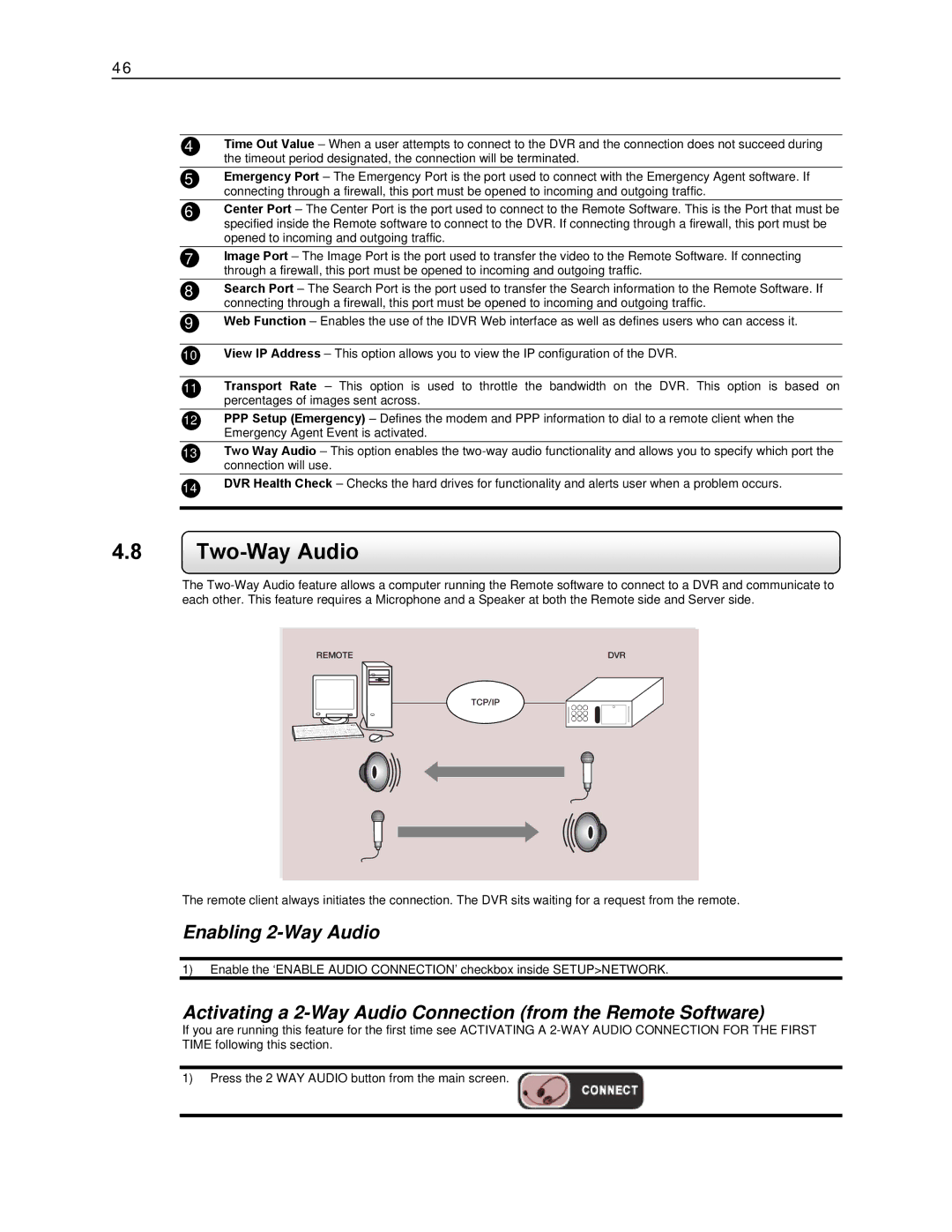
46
4Time Out Value – When a user attempts to connect to the DVR and the connection does not succeed during the timeout period designated, the connection will be terminated.
5Emergency Port – The Emergency Port is the port used to connect with the Emergency Agent software. If connecting through a firewall, this port must be opened to incoming and outgoing traffic.
6Center Port – The Center Port is the port used to connect to the Remote Software. This is the Port that must be specified inside the Remote software to connect to the DVR. If connecting through a firewall, this port must be opened to incoming and outgoing traffic.
7Image Port – The Image Port is the port used to transfer the video to the Remote Software. If connecting through a firewall, this port must be opened to incoming and outgoing traffic.
8Search Port – The Search Port is the port used to transfer the Search information to the Remote Software. If connecting through a firewall, this port must be opened to incoming and outgoing traffic.
9Web Function – Enables the use of the IDVR Web interface as well as defines users who can access it.
10View IP Address – This option allows you to view the IP configuration of the DVR.
11Transport Rate – This option is used to throttle the bandwidth on the DVR. This option is based on percentages of images sent across.
12PPP Setup (Emergency) – Defines the modem and PPP information to dial to a remote client when the Emergency Agent Event is activated.
13Two Way Audio – This option enables the
14DVR Health Check – Checks the hard drives for functionality and alerts user when a problem occurs.
4.8Two-Way Audio
The
REMOTE |
|
|
| DVR |
|
|
|
|
|
TCP/IP
The remote client always initiates the connection. The DVR sits waiting for a request from the remote.
Enabling 2-Way Audio
1)Enable the ‘ENABLE AUDIO CONNECTION’ checkbox inside SETUP>NETWORK.
Activating a
If you are running this feature for the first time see ACTIVATING A
1) Press the 2 WAY AUDIO button from the main screen.
